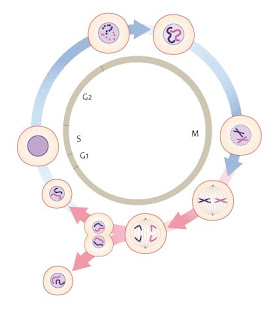Inner Mechanics of the Cell Cycle
Back when I went to school, I was fortunate when I could hitch a ride on a passing Stegosaurus. Another fiction of bygone days is that cells were simple. As science progressed, complexities of the cell became more and more apparent.
 |
| Credit: Wikimedia Commons / NHS National Genetics and Genomics Education Centre (CC BY 2.0) |
Believers in muck-to-mycologist evolution are confounded by explaining the origin of the first cell, let alone the irreducible complexity of the cell cycle. Before a cell can get its motor running and head out on the cell-division highway, it must go through several stages. It must duplicate its DNA, and those tiny molecular machines minimize mutations so cells don't run out of control. The entire process testifies to those who can understand of the Master Engineer's genius.
The cell cycle is one of the most important biological processes. It describes how cells multiply in number by duplicating the information in the parent cell before dividing into two daughter cells. There are over 10 trillion cells in the human body, and the cell cycle must work efficiently and accurately to increase and differentiate different types of tissues.
Evolutionists admit that the origin of the first cell is one of the most difficult problems for their theory. This is because the very first cell had to include a fantastic amount of stored information. It had to have a substantial number of complex molecular machines to maintain the cell, produce energy, and more. And it had to be able to reproduce itself by dividing. The cell cycle is present in all life forms, from simple bacteria to humans. It is a design element that is necessary for all living things.
To read the rest, see "The wonderfully designed cell cycle".